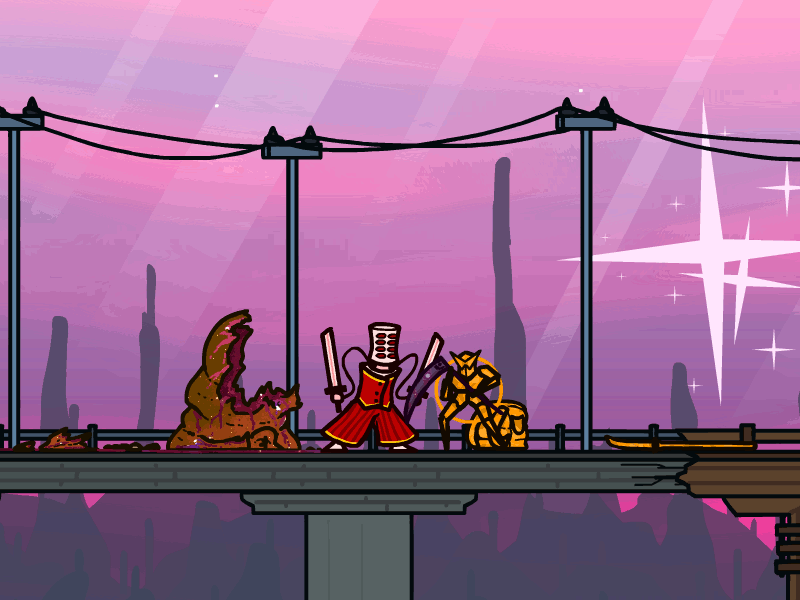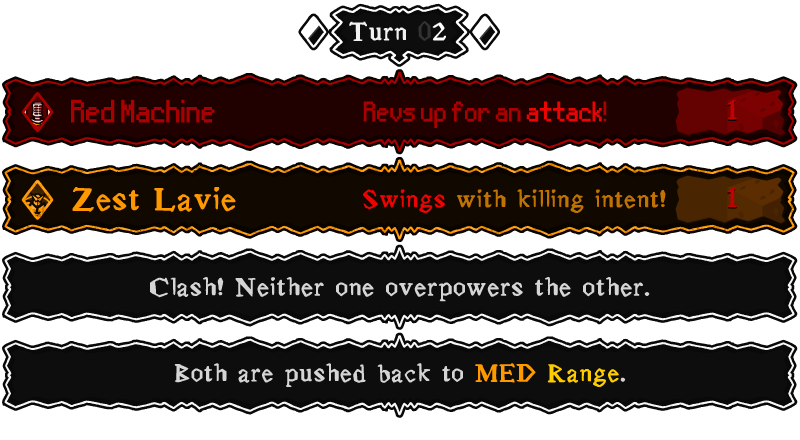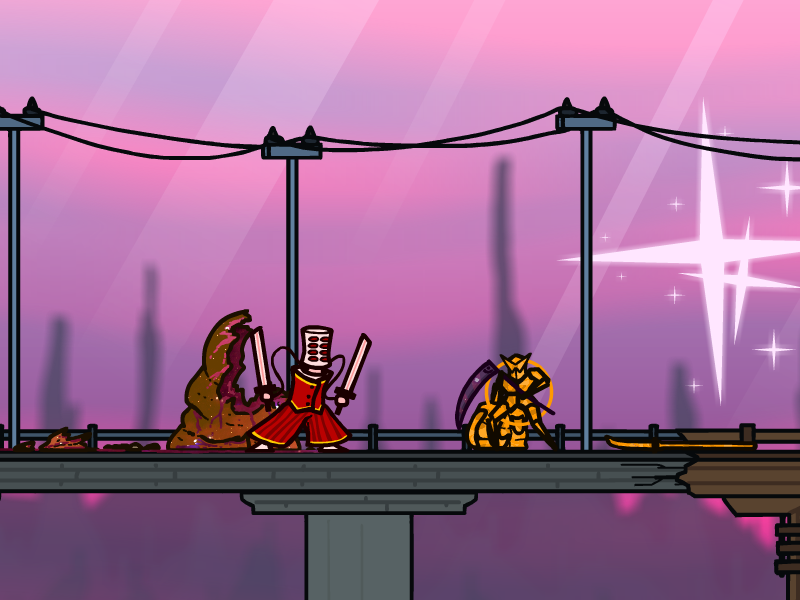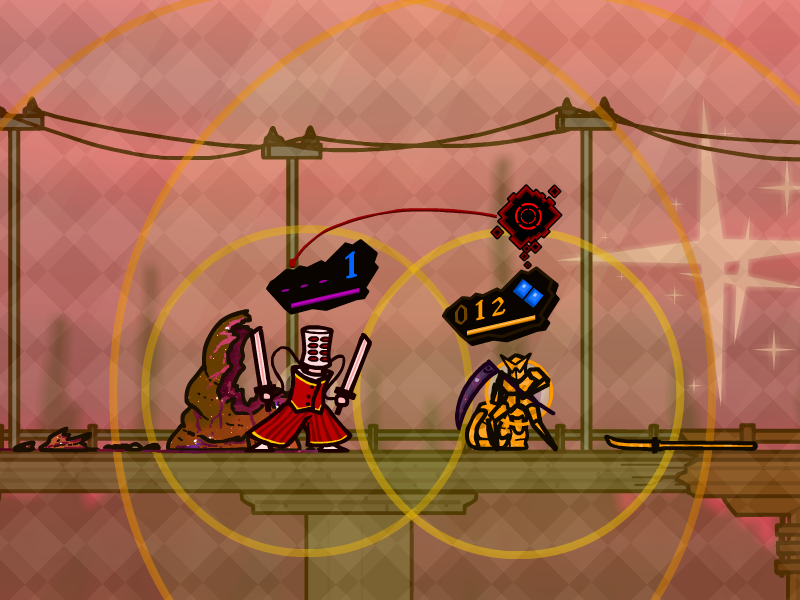- Location
- The Frozen North
[X] Act: Attack with the scythe
[X] Move: Move to MED range
[X] Move: Move to MED range
... Isn't the Scythe able to attack from medium range? Or was that just longer arms of Eishelon?
The Eishalon had reach well beyound ours due to how it held its weapon. We lack that, so are stuck with shorter strike range.... Isn't the Scythe able to attack from medium range? Or was that just longer arms of Eishelon?
as far as we know it was the effect of the scythe being attached to the long spine of the Eishalon.
Guess that falls under 'Longer arms/Superior Skill in wielding Scythes'.The Eishalon had reach well beyound ours due to how it held its weapon. We lack that, so are stuck with shorter strike range.
Oh! I know! What is your favourite kind of food?Well, no. As far as I know you guys don't count votes at all though? I usually do all that either way. I only asked because I couldn't get a clear vote but now we have one!
What uh, what is even really asked here?
It could be the multiple layer vote. Also, small changes in votes result in different votes for the voting program, so it counts them separately.I can't make head of what actually won and the program I use to count isn't doing much good either, it seems more confused than me... Uh...
My reasoning for moving back was that next turn, we can use star shards and then step back into LNG range, and hopefully the robot won't be able to attack that far. After that, we can advance back to MED and then SHT, starsharding and scything as appropriate. That way we at least have a chance of juking out one of its attacks instead of staying in SHT range the whole battle and just tanking all of them.Umm, why are we moving to MED range? We (unless we use starshards) can only attack at SHT range, while the Robot can attack at MED.
[X] ACT: Attack with the scythe
[X] MOVE: IF the enemy moves to MED range, move to SHT range.
-[X] Otherwise, don't MOVE.
Give it a bit longer - there were a few people who had a different MOVE action.
Let's plot it out:My reasoning for moving back was that next turn, we can use star shards and then step back into LNG range, and hopefully the robot won't be able to attack that far. After that, we can advance back to MED and then SHT, starsharding and scything as appropriate. That way we at least have a chance of juking out one of its attacks instead of staying in SHT range the whole battle and just tanking all of them.
We also hit it though. Turn is a tie.Let's plot it out:
At MED (assuming robot doesn't move this turn - if it does, we're either repeating this update, or move straight to 'at LNG'):
a. R attacks first, hits (probably - I don't think starshards would be able to parry).
We win.
Again, we also hit it. Tie.
Both hit each other, tie.
Loss for us.e. R moves back first, wasted starshards and wasted turn for both (we're possibly on a time limit with the other robot)
Wait. We're at MED. We starshard and hit while it attacks and hits (tie) then we move back and it moves back, resulting in both parties leaving engagement range. Presumably we automatically re-engage with no loss?
Overall, there's one good move, one bad, and lots of ties. Overall a neutral gain/loss average.Out of the six possible moves, there is only one good outcome (Robot attacks second and doesn't move).
At this point, if it looks like we're losing, we can attempt to disengage and run, or we can move to MED and use starshards. MED-->Starshards is a repeat of the previous turn, which I believe we win, but this also allows us an opportunity to run if we have to.Once at LNG, we have 2 real options:
a. Move to MED first, then starshards.
Good point; but we can always just choose not to do this.b. Move to MED second, then starshards next turn.
The second one basically just means we wasted a turn, with no attack and only not getting hit if the robot attacks first, when we'd be out of range, while a again only lets us not be hit if the robot moves back first, meaning a wasted turn (and starshard).
In rebuttal to this summary, following the previously laid out strategy, if we are stronger than the robot, we'll win the neutral exchange of attacks, and if we're weaker, we can run away.In summary: the only realistic way we're dodging the robot's attacks by move actions result in us both wasting our turn (and thus isn't at all helpful - dodging an attack by moving is only useful if we can strike back).
It is - not sure that this reply will be as coherent, and I can't counterpoint each of yours, but here's what I've got.
*Shrug* Not actually sure on that one. I'd say probably, but it'd still result in lost time, and I think we'll want to wrap this up as quickly as possible before the other robot comes back.Wait. We're at MED. We starshard and hit while it attacks and hits (tie) then we move back and it moves back, resulting in both parties leaving engagement range. Presumably we automatically re-engage with no loss?
While true, I think the one good move is probably the least likely move in there (why would it attack second instead of defaulting to first? What could it gain from attacking second without moving?).Overall, there's one good move, one bad, and lots of ties. Overall a neutral gain/loss average.
Something you're doing which doesn't really work: You're counting attacking at the same time as a tie, as well as attacking during the same turn, which is basically all that can happen. Parry might be better than starshards, because that's the only way to prevent damage (if we win the contest of Might, the opponents blow doesn't land - the robots only Might roll has been a 1), but on the flipside, if we lose we do nothing.If, on the other hand, we were to try to remain in SHT range the whole fight, the only possible outcomes are ties/parries if we attack at the same time, or losses if it moves back when we try to attack and then it attacks us. Summary of its possible moves and results if we attempt to stay in SHT:
a. Move back/attack:
--If we attack first, we miss (loss)
--If we attack second, we parry (tie?)
b. Attack/move back:
--If we attack first, we parry (tie?)
--If we attack second, it hits first and we miss second (loss)
c. Move forward/attack:
--If we attack first, hit, but then it will hit us second half (tie)
--If we attack second, we parry (tie?)
c. Attack/move forward:
--If we move first, it hits, then we hit second (tie)
--If we attack first, we parry (tie?)








